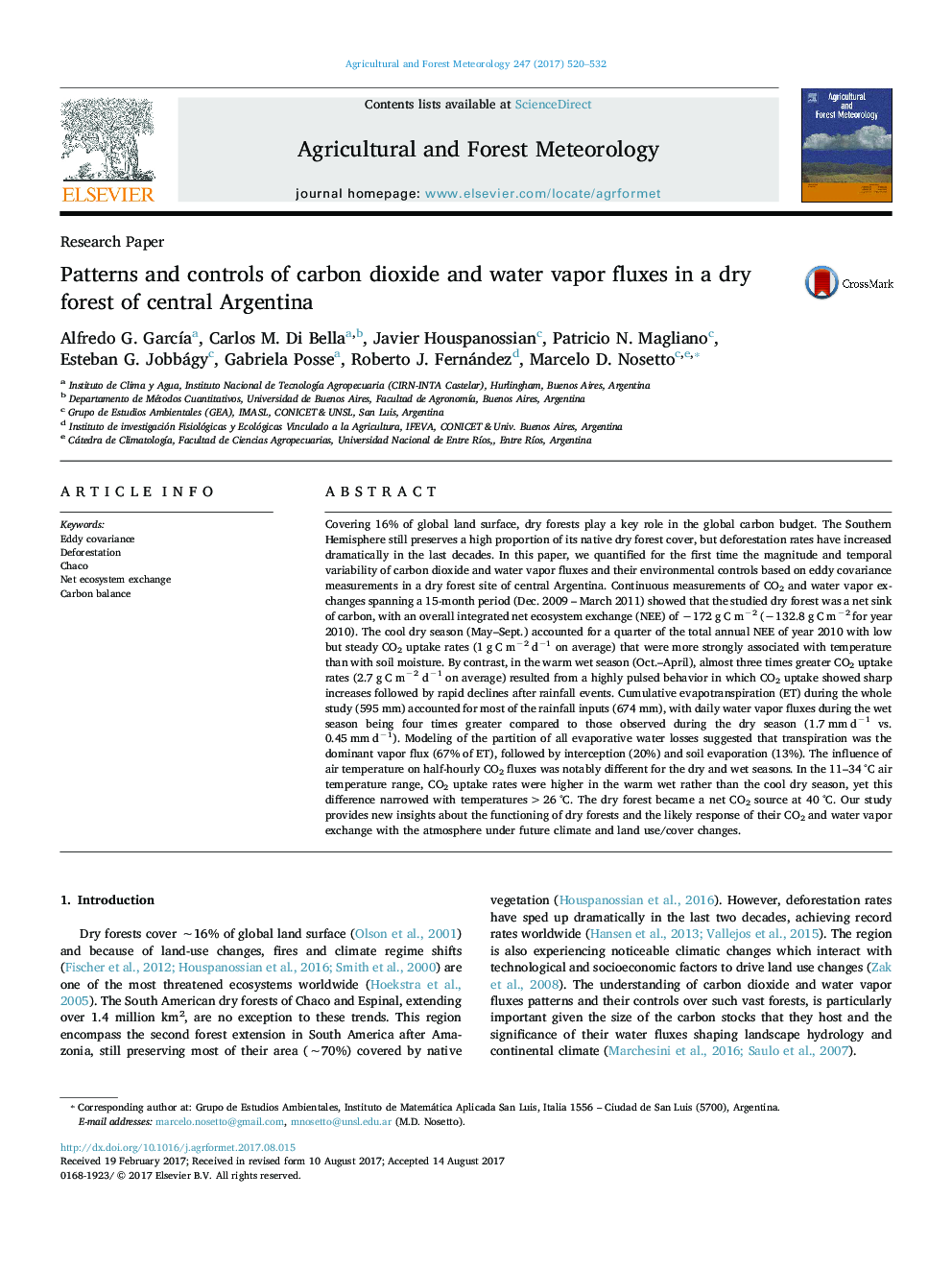| کد مقاله | کد نشریه | سال انتشار | مقاله انگلیسی | نسخه تمام متن |
|---|---|---|---|---|
| 6457844 | 1420854 | 2017 | 13 صفحه PDF | دانلود رایگان |
- We quantified for the first time CO2 and water vapor fluxes in an Argentinean dry forest.
- The dry forest was a net sink of carbon with a NEE of â132.8 g C mâ2 for year 2010.
- The cool dry season accounted for a quarter of annual NEE.
- Soil moisture had a stronger influence on CO2 fluxes during the warm wet season.
- Cumulative ET accounted for most of the rainfall.
Covering 16% of global land surface, dry forests play a key role in the global carbon budget. The Southern Hemisphere still preserves a high proportion of its native dry forest cover, but deforestation rates have increased dramatically in the last decades. In this paper, we quantified for the first time the magnitude and temporal variability of carbon dioxide and water vapor fluxes and their environmental controls based on eddy covariance measurements in a dry forest site of central Argentina. Continuous measurements of CO2 and water vapor exchanges spanning a 15-month period (Dec. 2009 - March 2011) showed that the studied dry forest was a net sink of carbon, with an overall integrated net ecosystem exchange (NEE) of â172 g C mâ2 (â132.8 g C mâ2 for year 2010). The cool dry season (May-Sept.) accounted for a quarter of the total annual NEE of year 2010 with low but steady CO2 uptake rates (1 g C mâ2 dâ1 on average) that were more strongly associated with temperature than with soil moisture. By contrast, in the warm wet season (Oct.-April), almost three times greater CO2 uptake rates (2.7 g C mâ2 dâ1 on average) resulted from a highly pulsed behavior in which CO2 uptake showed sharp increases followed by rapid declines after rainfall events. Cumulative evapotranspiration (ET) during the whole study (595 mm) accounted for most of the rainfall inputs (674 mm), with daily water vapor fluxes during the wet season being four times greater compared to those observed during the dry season (1.7 mm dâ1 vs. 0.45 mm dâ1). Modeling of the partition of all evaporative water losses suggested that transpiration was the dominant vapor flux (67% of ET), followed by interception (20%) and soil evaporation (13%). The influence of air temperature on half-hourly CO2 fluxes was notably different for the dry and wet seasons. In the 11-34 °C air temperature range, CO2 uptake rates were higher in the warm wet rather than the cool dry season, yet this difference narrowed with temperatures >26 °C. The dry forest became a net CO2 source at 40 °C. Our study provides new insights about the functioning of dry forests and the likely response of their CO2 and water vapor exchange with the atmosphere under future climate and land use/cover changes.
Journal: Agricultural and Forest Meteorology - Volume 247, 15 December 2017, Pages 520-532
